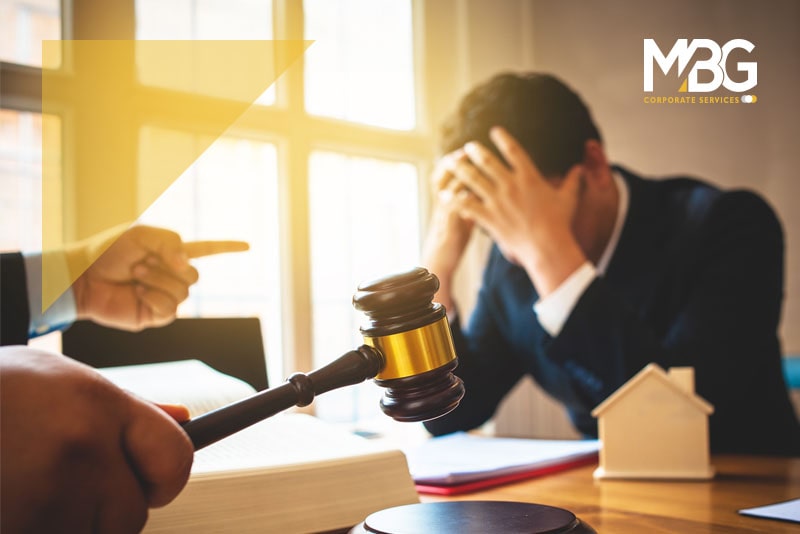
On October 31, 2023, the United Arab Emirates (UAE) introduced Federal Decree – Law No. 51/2023 concerning Financial Restructuring and Bankruptcy (referred to as the ‘New Bankruptcy Law’), replacing Federal Decree – Law No. 9/2016 on Bankruptcy (referred to as the ‘Old Bankruptcy Law’). The New Bankruptcy Law came into force on 1st May 2024. The enactment of the Bankruptcy Law represents a significant milestone, aiming to boost economic activity and ensure greater stability in the region. Like its predecessor, the New Law does not extend to the ADGM or the DFIC free zones, each of which upholds its own insolvency frameworks.
This article provides an in-depth overview of the significant changes brought about by the New Bankruptcy Law, while also emphasizing its key features.
New Definitions
The New Bankruptcy Law brings forth several new definitions, such as "related parties," "debtor’s assets," "bankruptcy register," "bankruptcy unit," "cessation of payment," and numerous others.
Preventive Settlement
Establishment of Bankruptcy Court and Bankruptcy Unit
The New Bankruptcy Law includes provisions for establishing Bankruptcy Courts, both at the federal and local levels. These courts are designed to oversee and decide on preventive settlement, financial restructuring, and bankruptcy proceedings in the future. It also establishes a dedicated division within the Courts, tasked with managing and supervising bankruptcy and restructuring cases to support the functions of the Bankruptcy Court, known as the "Bankruptcy Unit." The role of the Bankruptcy Unit includes handling requests in accordance with the law, informing involved parties of court rulings, and verifying adherence to necessary information and documentation standards before submission to the Bankruptcy Court, organizing a bankruptcy register; amongst others. Any claims, legal proceedings, grievances, or actions currently pending before courts under the Old Bankruptcy Law, and not resolved prior to May 1, 2024, will be transferred to the appropriate Bankruptcy Court for resolution.
The Implementing Regulations, anticipated to offer additional guidance on the practical application of the New Law, are still pending.
Restructuring Procedures
The Bankruptcy Law also allows a debtor to open restructuring proceedings pursuant to which a debtor may propose a restructuring plan to be approved by its creditors. The restructuring proceeding is similar to the preventive settlement (including the ability obtain new money financing) save that the key differences include: (i) the moratorium during a restructuring being valid until the plan is ratified by the Bankruptcy Court, (ii) a court-appointed trustee supervising management in the running of the company, the restructuring process and subsequent implementation, and (iii) the Court having the ability to ratify a plan that has been rejected by the creditors provided that the creditors are not worse off in respect of their rights than they would be in the event of a bankruptcy. Debtors may opt for restructuring upon default or financial insolvency.
Extension of Liability
The Bankruptcy Law expands the scope of potential liability beyond members of the board of directors and managers to encompass individuals directly involved in managing the company and those overseeing its liquidation. In the event of bankruptcy, the Bankruptcy Court can hold these individuals accountable for specific actions taken within two years preceding the company's inability to meet its financial obligations.
If found responsible, individuals may need to pay a sum proportionate to their errors, which will be allocated towards settling the company's debts. For instance, if the company's assets can cover only 20% of its debts due to financial decline caused by the individual's actions, they may face liability.
Under the new law, there's a two-year window from the date of bankruptcy declaration to initiate legal proceedings for liability against these individuals. Moreover, individuals can be exempt from liability if they can demonstrate that they took standard precautionary measures or raised documented objections to the actions in question.
It is pertinent to note that as per the Old Bankruptcy Law, creditors holding undisputed claims of at least AED 100,000 (approximately $27,225) could file a bankruptcy petition against the debtor. However, the threshold under the updated Bankruptcy Law will be established based on the implementing regulations.
How can we help?
The implementation of the Bankruptcy Law is expected to enhance restructuring and bankruptcy processes in the UAE, aiming to foster investment and the effective utilization of capital. The success of the new regime will depend ultimately on how effectively it is used in practice. If you have any questions regarding the New Bankruptcy Law and how it may affect your business operations, don't hesitate to get in touch with us. Our team at MBG is here to provide you with comprehensive guidance and support, ensuring that you have a thorough understanding of the implications.